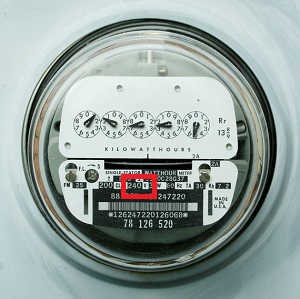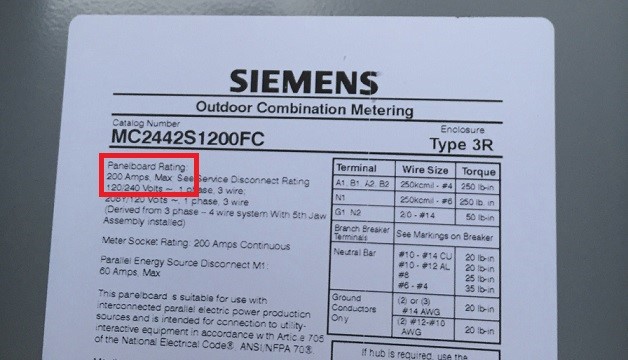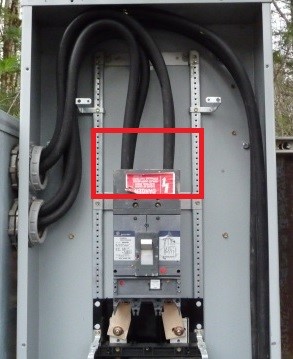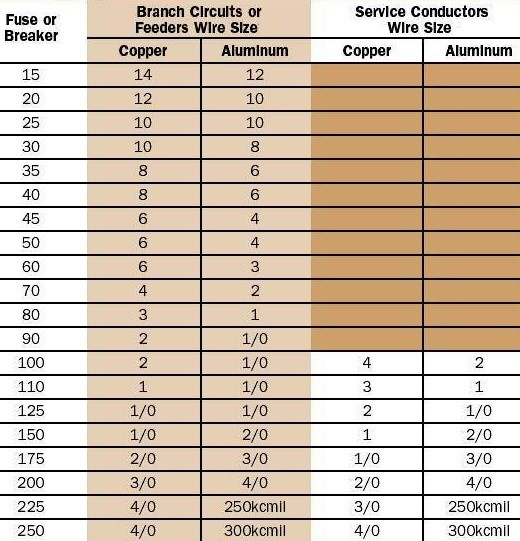Most home inspection standards require inspectors to determine and report on the voltage and amperage supplied to the home. This is intended to be a basic explanation of how home inspectors can make this determination during their (visual) inspection.
Most residential houses in the US are 120V/240V single phase systems. While you may see it written as 110/115/120/125V or 220/240/250V, it is described as “nominal” voltage, meaning that the measurement (voltage in this case) may not be exactly the stated value. 120/240V is the current standard nomenclature used for single phase systems in the US. Unless you are dealing with an older 120V meter or a 3-phase electrical system, you are safest describing the system as 120/240V in your inspection report.


The amperage can be a little more difficult to determine during a visual inspection. While inspecting the main electrical panel (the first means of electrical disconnect in the home), there are four main items to investigate when determining amperage. The first is the rating on the meter, which will verify that the house is supplied with 240V available. Most modern meters are made to supply 240V to the house. Only very old meters are limited to 120V, and would be considered outdated by today’s standards.
Once you have verified 120/240V at the meter, the three remaining items are typically inspected inside of the main electrical panel. Home inspectors must examine the main breaker rating (if supplied), the panel rating tag (if visible) and the main service entrance conductors (the wires delivering power from the meter to the main panel).


Whichever of these three items has the lowest amperage ratings is the amperage rating for the electric system, as it will serve as the limiting item of the electrical service. For example, if the main breaker is rated at 200A, the panel is rated for 200A, but the service entrance conductors are only rated for 125A, then the house has a 125A service.
I always recommend stating in your report where you derived the amperage rating (from main breaker, from panel tag or from wire size). Including this information in your report can help eliminate any confusion regarding your findings, as you can prove where you derived the information that you included in the report.


I recommend taking a picture of this (or a similar) chart and saving it in your phone for quick reference. Inspectors that use a clipboard will often laminate a picture of a wiring size chart to the back of their clipboard for easy access. Regardless of where you keep it (your phone, a clipboard or tattooed to your arm), a quick-reference chart can help you to easily identify the corresponding amperage for the wire in question, saving precious time during the inspection process.
While the electrical portion of the home inspection can often be the most stressful and difficult part of the inspection, developing a consistent routine to follow can help to alleviate stress, allowing for an easier and more professional inspection. And having a few cheat-sheets stored in strategic places doesn’t hurt, either!
Be safe out there.

